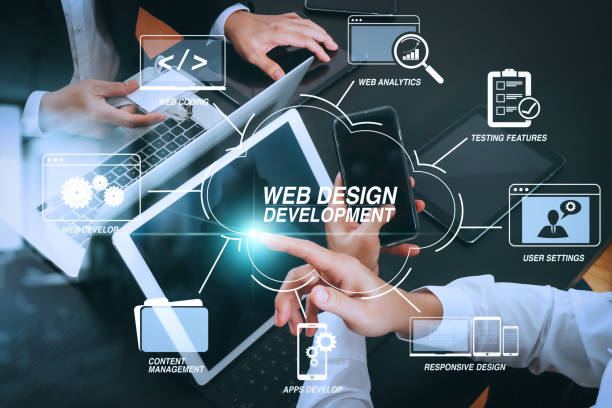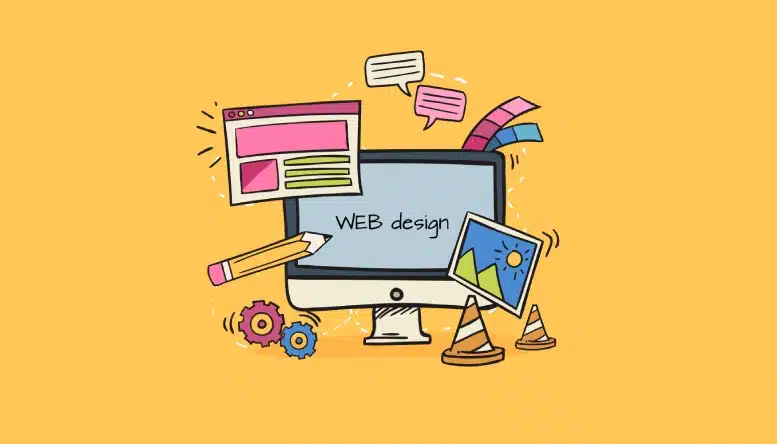Professional Aligned Position Web Design: Custom Websites Tailored to Your Business Needs
The Best Sorts Of Website Design to Enhance Customer Experience and Involvement
In the ever-evolving landscape of electronic communication, the efficiency of Web style substantially affects individual experience and interaction. Numerous style approaches, such as minimalist, receptive, and interactive designs, each deal distinct benefits that can cater to varied customer demands.
Minimal Web Style
As electronic landscapes come to be progressively cluttered, minimal website design has emerged as a powerful method to boosting user experience. This layout philosophy prioritizes simpleness, concentrating on important elements while getting rid of unnecessary disturbances. By making use of ample white room, straightforward navigating, and a minimal shade scheme, minimal layout cultivates quality and directs individual interest to key content.
The core concept of minimalist website design is to develop a seamless interaction for users. By reducing cognitive tons, users can quickly understand information without really feeling bewildered. This direct technique not just boosts use yet likewise urges involvement, as visitors are most likely to explore a site that is aesthetically appealing and easy to browse.
In addition, minimalist design often stresses typography and images, making use of these components strategically to convey messages properly. This emphasis on necessary components can boost brand name identification and produce an unforgettable user experience. In essence, minimalist website design is not just a fad; it is a thoughtful methodology that identifies the relevance of user-centered style. By stripping away peripheral elements, designers can produce an extra interesting, effective, and delightful Web experience for all users.
Responsive Website Design
In today's diverse electronic environment, receptive Web design has actually ended up being essential for creating a seamless customer experience throughout a wide range of devices. As customers access internet sites on mobile phones, desktops, laptops, and tablets, the capacity of an internet site to adapt its format and material to various display dimensions and resolutions is vital.
Responsive Web design utilizes flexible grids, pictures, and CSS media questions to guarantee that Web content exists efficiently, despite the device made use of. This approach not only boosts the aesthetic appeal of a site yet likewise considerably improves use. Users are more probable to engage with a site that supplies a constant experience, as it eliminates the disappointment of needing to zoom in or scroll excessively.
By taking on receptive layout, services can improve their presence and get to a broader audience. In recap, responsive Web style is a fundamental practice that enhances customer experience, engagement, and general contentment.
Interactive Website Design
Receptive website design lays the groundwork for enhancing customer experience, yet interactive Web style takes this a step better by engaging customers in a more dynamic means - Aligned Position Web Design. By incorporating elements such as computer animations, clickable models, and real-time responses, interactive website design captivates customers, drawing them into a richer surfing experience
This technique not just fosters involvement but also encourages individuals to discover content proactively instead than passively consuming it. Techniques such as gamification, where individuals make incentives for finishing tasks, can dramatically boost the time invested on a site and enhance general contentment. Furthermore, interactive features can simplify complex information, making it more digestible and enjoyable.

Including interactive design components can also cause greater conversion rates, see here as customers are most likely to engage with a site that proactively includes them. Aligned Position Web Design. Inevitably, interactive website design transforms customer experiences into unforgettable trips, making certain that visitors return time after time
Flat Style
Defined by its minimalistic technique, level design emphasizes simplicity and performance, removing unneeded components and concentrating on important features. This design approach prioritizes functionality, making certain that customers click now can browse interfaces with simplicity and effectiveness. By utilizing a clean aesthetic, flat design gets rid of the clutter typically discovered in much more elaborate styles, thus enhancing user focus on content and capability.
The characteristic of level layout depends on its usage of vibrant shades, basic typography, and geometric forms. These aspects contribute to a visually appealing user interface that is both approachable and modern. Additionally, level layout cultivates a sense of clearness, allowing individuals to discern vital activities and info without interruption.
Furthermore, flat design is especially reliable in responsive Web design, as its simplicity equates well across numerous devices and screen dimensions. By focusing on crucial functions, level layout not only meets individual demands but also motivates smooth communication, making it an important part of reliable Web style approaches.
Adaptive Website Design
Adaptive website design personalizes the individual experience by developing numerous repaired designs customized to various display dimensions and tools. Unlike receptive design, which fluidly changes a solitary layout, flexible style uses distinct designs for particular breakpoints, ensuring optimum discussion on various systems. This method permits designers to concentrate on the unique qualities of each gadget, boosting usability by delivering precisely what users require based upon their context.
Among the key benefits of flexible website design is its capability to enhance tons times and performance. By serving tailored web content and photos that fit the individual's tool, internet sites can decrease information use and improve loading speeds. This is particularly helpful for customers with slower links or restricted data strategies.

In addition, flexible design promotes a much more regular and regulated branding experience. Considering that designers produce numerous layouts, they can ensure that the aesthetic elements line up with the brand name's identity across various platforms - Aligned Position Web Design. This results in a cohesive customer experience, enhancing involvement and promoting individual retention
Final Thought
Minimal design promotes clarity and focus, while responsive style makes certain flexibility throughout different tools, advertising accessibility. Jointly, these design comes close to add to the creation of straightforward environments that not only boost satisfaction yet additionally drive greater conversion prices, underscoring their vital importance in contemporary Web design techniques.

Minimalist design promotes quality and focus, while receptive layout guarantees versatility across different gadgets, advertising availability. Jointly, these style approaches add to the creation of straightforward environments that not just enhance complete satisfaction yet likewise drive higher conversion prices, underscoring their critical relevance in modern Web layout techniques.